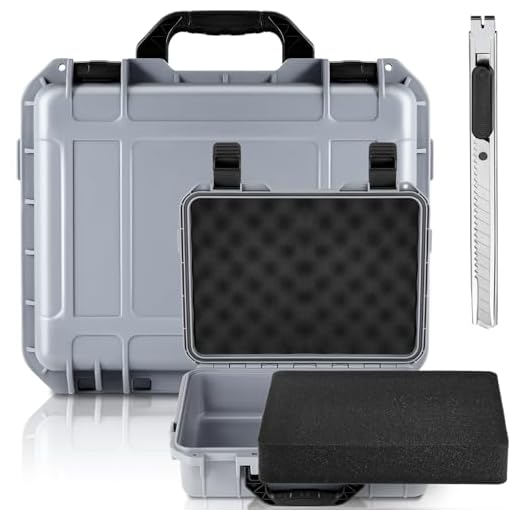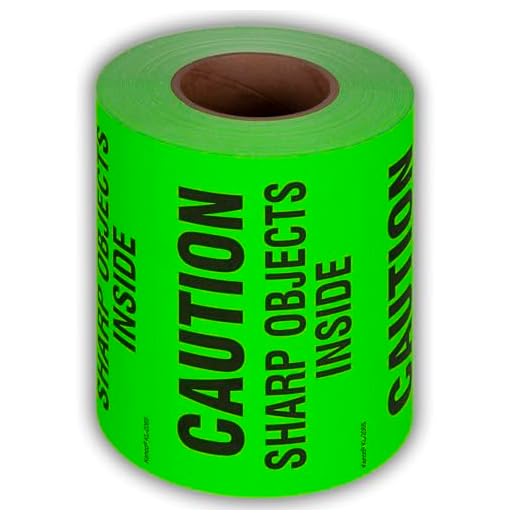



Yes, you can include your sculpting instruments in your checked baggage. However, it is essential to take into account several guidelines imposed by various airlines and regulatory bodies. For instance, tools with sharp edges are generally permitted, but they must be securely wrapped to prevent injury to baggage handlers and inspectors.
Always verify the specific regulations of the airline you’re using, as some may have restrictions on sharp objects or unique requirements for transporting equipment. It’s advisable to label your bag clearly and consider placing your tools in a dedicated compartment to streamline security screenings.
Ensure that your equipment is thoroughly protected during transit. Employ padding or cases specifically designed to safeguard pointed items. This not only protects your belongings but also expedites the screening process, which can be delayed if items are not securely stored.
Can I Pack Carving Tools in My Check-in Luggage?
Yes, it is generally permissible to include these instruments in your checked baggage, provided they are securely packed to prevent any damage during handling. It’s advisable to wrap each item in protective material to mitigate the risk of injury to baggage handlers or damage to other personal belongings.
Ensure that the blades are covered or sheathed to avoid accidental cuts. Different airlines may have varied policies, so checking their specific regulations regarding sharp items is prudent before departure.
If traveling internationally, be aware of customs regulations in your destination country, as some places might restrict entry of specific kinds of sharp implements. To avoid complications at security checkpoints, inform the staff about the contents of your bags if asked.
In the event of traveling with larger equipment, consider that it may need to be considered as oversized baggage, which could incur additional fees. Always maintain regular check and confirmation with your airline in case of any policy updates.
Understanding Airline Regulations on Sharp Objects
Airline policies regarding sharp implements vary significantly across different carriers and countries. Always check the specific guidelines of the airline you’re flying with prior to your trip. Generally, bladed objects with a blade length exceeding a certain measurement are prohibited from being carried in the cabin of the aircraft.
General Guidelines
Many airlines permit sharp items in the hold compartment under specific circumstances. Ensure that these objects are securely wrapped or stored to prevent injury to personnel handling baggage. Always verify if there are any restrictions or requirements for transporting these items internationally, as customs regulations may further impact what is allowed.
Recommendations for Transportation
Label any item clearly to identify its contents. Consider using protective cases or pouches to minimize the risk of damage or injury. If carrying multiple items, consolidate them to streamline security checks and reduce the risk of losing any individual piece during transit.
Types of Carving Tools Allowed in Checked Baggage

Most airlines permit specific types of cutting instruments in your registered baggage. The following categories are generally accepted:
1. Chisels
Chisels with blades less than 4 inches are typically acceptable. Ensure the edges are adequately protected to avoid damage during transit.
2. Routers
Electric routers and their bits are usually permitted but check with your airline. Disassemble them for safety and efficiency.
3. Knives
Blades that are under a certain length, often around 4 inches, can be included. Foldable models are preferred, as they are safer to transport.
| Type | Size Limit | Notes |
|---|---|---|
| Chisels | Less than 4 inches | Blade protection required |
| Routers | No specific limit | Disassemble for safety |
| Knives | Under 4 inches | Folding models preferred |
Before travel, verify regulations on your airline’s website for the most accurate information regarding these implements. Also, consider investing in the best rolling duffel for scuba travel to ensure secure transport of these items.
How to Properly Pack Carving Tools for Travel
Ensure safety by securing all instruments in protective cases or sheaths. This minimizes the risk of accidental injury during transit and protects the sharp edges from damage. Invest in sturdy carriers that provide cushioning and can withstand rough handling.
For sharp implements, utilize foam padding or bubble wrap around each piece. This extra layer prevents movement within the container, which can cause breakage or injury. Clearly label your container as containing sharp items; this is beneficial for both security personnel and baggage handlers.
Stack heavier items at the bottom of your bag to stabilize the load, while lighter components can rest on top. This arrangement not only optimizes space but also protects delicate parts from being crushed. Adjust the weight to adhere to airline specifications to avoid excess baggage fees.
Always check the regulations of the airline or transport service being used. Policies can vary, and some companies might restrict certain implements or require special handling instructions. Refer to resources like the best luggage choice magazine for guidance on suitable carriers.
Consider using a transit-safe container that cannot easily be opened without tools. This can deter tampering and theft. Additionally, research the best storage options tailored for transport; products such as the best bicycle pressure washer offer durable solutions for maintaining your gear over time.
Lastly, arrive early at the airport. This allows ample time for inspection and increases the likelihood of a smooth process through security checkpoints.
Potential Issues at Security Checkpoints
Be prepared for potential complications during the security screening process. Certain items may attract additional scrutiny from personnel, leading to delays. Here are specific factors that might arise:
- Restricted Items: Ensure that none of your possessions fall under the category of restricted or prohibited objects, as this could result in confiscation.
- Sharp Edges: Instruments with visible cutting surfaces may lead to further examination or might require additional documentation.
- Weight Limitations: Exceeding weight thresholds for checked items can prompt inquiries and possible additional fees.
- Packaging: Inadequate wrapping or loose handling can raise alarms, causing delays as security inspects items more thoroughly.
- Inconsistencies: Discrepancies between what is declared and what is found could result in additional questioning from airport staff.
Always check the specific guidelines of your airline in advance to minimize complications. Packing strategically and adhering to regulations can significantly reduce the likelihood of issues at checkpoints.
Alternatives to Bringing Carving Tools on a Plane

Consider utilizing pre-cut or pre-assembled materials for your creative projects. Many craft stores offer wooden pieces or kits that require minimal additional work, eliminating the need for personal blades or sharp instruments during travel.
Explore the option of renting equipment at your destination. Local workshops or makerspaces often provide access to various instruments, allowing you to complete your work without transporting personal items.
Digital Options
Utilize software applications designed for design and modeling. These programs can help in planning projects, reducing the need for physical instruments. Once you arrive at your destination, the digital files can be shared with local fabricators or shops that can assist in materializing your designs.
Alternative Transportation
If transporting personal items is essential, consider shipping them through a courier service. This method allows for safe delivery to your destination, mitigating potential airport security issues. Ensure items are securely packaged and comply with mailing regulations for sharp objects.








